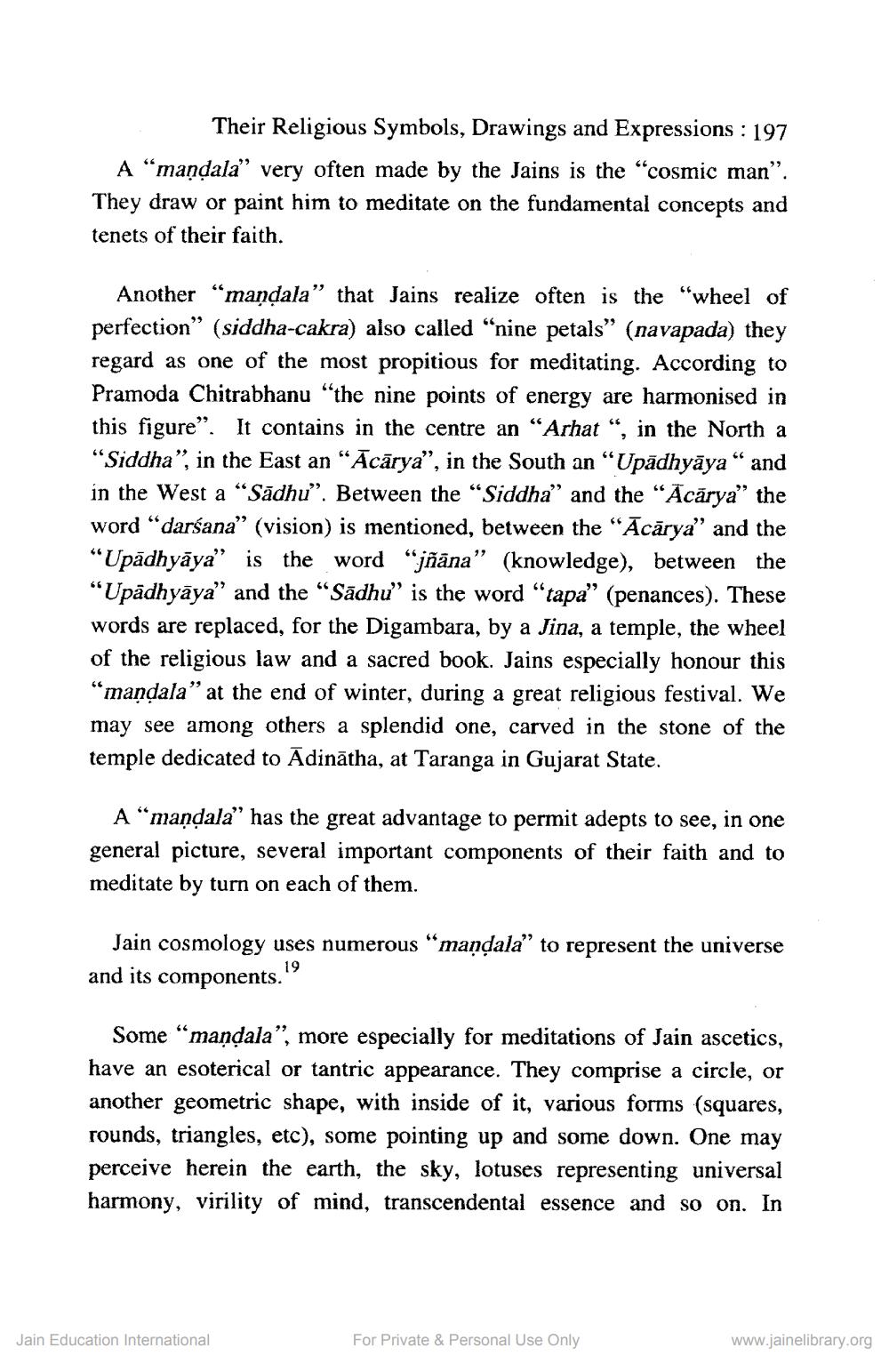________________
Their Religious Symbols, Drawings and Expressions : 197 A "mandala” very often made by the Jains is the "cosmic man”. They draw or paint him to meditate on the fundamental concepts and tenets of their faith.
Another “mandala” that Jains realize often is the "wheel of perfection” (siddha-cakra) also called "nine petals” (navapada) they regard as one of the most propitious for meditating. According to Pramoda Chitrabhanu “the nine points of energy are harmonised in this figure”. It contains in the centre an “Arhat“, in the North a "Siddha", in the East an “Ācārya”, in the South an “Upādhyāya" and in the West a “Sādhu”. Between the “Siddha" and the “Acārya” the word “darśana” (vision) is mentioned, between the "Ācārya" and the “Upadhyāya” is the word “jñāna” (knowledge), between the "Upadhyāya” and the “Sādhu” is the word "tapa” (penances). These words are replaced, for the Digambara, by a Jina, a temple, the wheel of the religious law and a sacred book. Jains especially honour this "mandala" at the end of winter, during a great religious festival. We may see among others a splendid one, carved in the stone of the temple dedicated to Ādinātha, at Taranga in Gujarat State.
A "mandala" has the great advantage to permit adepts to see, in one general picture, several important components of their faith and to meditate by turn on each of them.
Jain cosmology uses numerous "mandala” to represent the universe and its components.''
Some “mandala”, more especially for meditations of Jain ascetics, have an esoterical or tantric appearance. They comprise a circle, or another geometric shape, with inside of it, various forms (squares, rounds, triangles, etc), some pointing up and some down. One may perceive herein the earth, the sky, lotuses representing universal harmony, virility of mind, transcendental essence and so on. In
Jain Education International
For Private & Personal Use Only
www.jainelibrary.org




